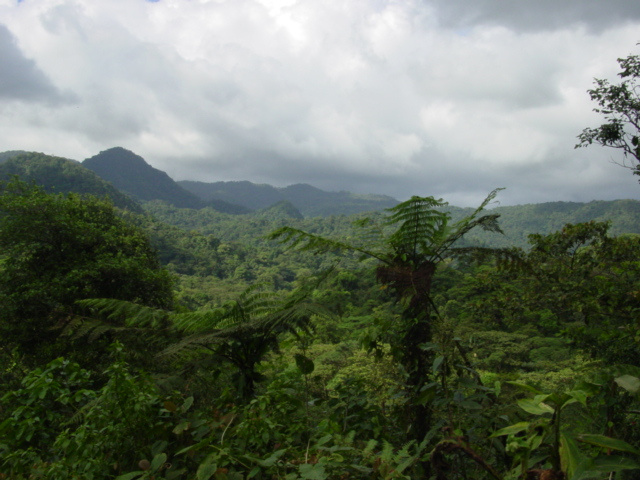
Penas Blancas National Park
Located along the southeastern slopes of the Tilaran Mountain Range, this rugged protected zone was recently added to the Costa Rica park system. Expect to find uneven trails throughout the 5,900 acres (2400 ha) of Penas Blancas National Park (Parque Nacional Penas Blancas).
More about Penas Blancas National Park
Not necessarily known for its biodiversity, explorers might find it a bit more challenging to uncover wildlife although many of the country's mammal species, as well as a huge number of bird species, populate the various levels of habitat located within these borders.
The altitude varies significantly within the park, rising up from around 2,000 feet (600 m) to 4,600 ft (1400 m). This means you can expect to see several different habitats. In the lower sections of the park, tropical dry forest dominates the landscape. In the middle elevations, the forest changes into tropical moist forest and at higher altitudes into premontane forest this is characterized by a wealth of live oaks. The creation of the park was to protect these habitats which suffered greatly when logging was dominant in the area.
The park's name, Penas Blancas, means "white cliffs' and refers to the diatomaceous earth deposits found all over the park. This white-colored sedimentary rock is as breakable as chalk and can found in the walls of the river valleys. Its main components are diatoms, which primarily consist of silicon and have a texture similar to that of pumice. Diatomaceous earth is commonly used for filtration, as a mild abrasive, an absorbent or for its heat-resistant properties.
The national park sits 3.7 miles (6 km) to the northeast of Miramar (5 miles, 8 km northeast of the Inter-Americana Highway), which serves as a great place to grab a meal or stock up on supplies. From here you can hike the distance into the park or head 9 miles (14 km) to the town of Penas Blancas to access the national park. Hikers will need to be self sufficient as there are no facilities once inside the protected zone. Camping is allowed. The best time to visit is during the dry season which is from January to April.
Moments to look forward to
We believe travel is more than ticking destinations off a list – it’s about discovering new places deeply, feeling connected wherever you go, and knowing you have a trusted team behind you every step of the way.



